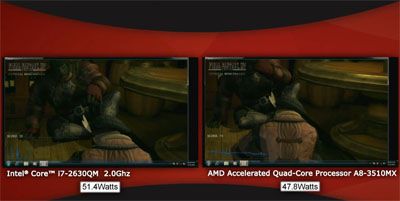Hawke said:
Ok - I can see the benefit (with the graphics processor right next to the CPU cores have less to travel) but if something better comes out graphics wise and the CPU speed is sufficient, I am not going to ditch a CPU that cost me £££ for a CPU with similar performance but with a new GPU inside for more £££
You don't -have- to use the integrated graphics processor, though. It's just another feature tacked on there for those that
do. A typical PC gamer is not going to consider using the IGP, but for
most users, it's sufficient for HD video and casual games. For the rest of us, we'll stick to a discrete GPU.
The "cost" of the IGP inside of a SB or similar CPU is hard to define, because there just isn't one. The GPU and CPU are one in the same in the current crop of processors. But I think it's best to consider that the IGP isn't a needless feature tacked on, because a LOT of people will make use of it, and for those that don't, it will just sit there doing nothing.
It is important to note, though, that with QuickSync and Z68, you can use
both the IGP and discrete GPU in unison. While you are gaming it up with your discrete card, you could be encoding a video with the IGP. That's a nice feature.
As for server CPUs, I can't ever see those including an IGP, unless we reached a point where the silicon required was so minimal, it just didn't matter that it was there (some -would- use it, so there isn't a ton of reason to deliberately leave it out). The same goes for the beefiest CPUs out there. Not everyone who purchases a six or eight core CPU will be a gamer, so for those using the CPU for other purposes, an IGP could be appreciated. Being able to forego a discrete card means that their workstations would run with less power, and require less room.

